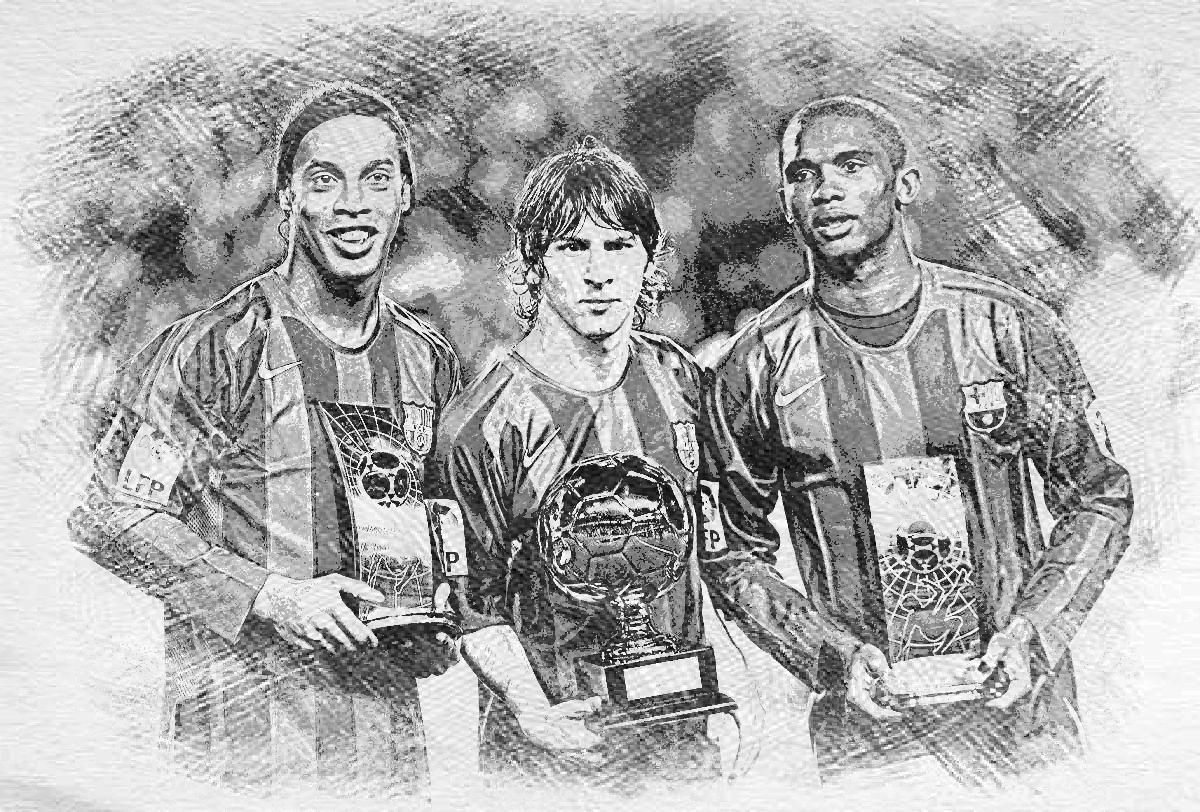
Total Football Journeyman: Perfecting the Attacking Trident
The theme of my last few articles has been the concept of on-the-field partnerships. And how such relationships between players have proved to be so important for some of the greatest winning teams in the history of the game. Today, nobody can think of the great Barcelona team 2000s without remembering the names of Busquets, Iniesta and Xavi. Or Chelsea team from that same period. That team dominated Premier League and Europe and was defined by the legendary trio of Frank Lampard, Claude Makelele and Michael Essien. The effect that chemistry between players can have on club’s success is undeniable. So how can we integrate this into the main principle of my tactic; Total Football = total balance in both defence and attack. Next it is time to take look at the attacking part of the tactic.
Attacking Trident – Power, Playmaking and Panache
Continuing with the theme of the Swiss Knife, I look at the versatility offered by my forwards. By now I hope you are starting to see the pattern present in the two previous strata of my tactic. Both defence and midfield are made up of perfectly complimentary roles. Like a jigsaw puzzle with pieces that interlock together. It makes it easy to choose the roles that fit the strengths of your players. Viewed as a whole my midfield players are able to do everything: create. attack and defend. Just as we saw with the defensive pairing. Separately, my defenders posses speed, creativity, strength and technique. None of my centrebacks have all of these strengths on their own. Yet partnered up they have all the required attributes to counter any threat.
Likewise, I do not need every one of my attackers to be able to do everything on the pitch. As a part of the efficient attacking trident, I prefer to delegate varying duties to each one. In this way each of the trio serves an integral role in the greater whole.
Each “prong” is responsible for one of the three aspects of a well-coordinated attack: POWER, PLAYMAKING and PANACHE (trickery, flair, etc). The central prong, my “POWER” player, is the strong hold-up role. A sort of offensive pivot around which your other forwards will move. Here the central striker will serve as the strong focus to attract the opposition defenders. In this way he will pull them out of position and free up space for your other forwards to attack. For this role, you ideally use one of your best players. Because he will need to occupy two opposition defenders at the same time. Think someone like Didier Drogba in Jose Mourinho’s Chelsea.
And like Drogba he will not just serve as a decoy that drops into space to drag the defenders with him. But more as a powerful striker that pushes the defensive line back with his presence. Not a mere stationary targetman. And if left unmarked could charge forward and do some damage.
The role choice for the central striker is always an important and difficult one in midfield-heavy 4-5-1 or 4-3-3. Naturally there is a lot that depends upon this player and his synergy with the two wide attackers. It’s not like in a dual striker partnership where it’s hard to go wrong. As long as you choose two complimentary roles. Attack/Support duties always make for a good combination, whether you pair Poacher, Advanced Forward or any other Attack duty striker with pretty much any supporting striker. Of course, it makes sense to still study the player’s attributes and match the player with a suitable role. Not all support striker roles are the same. Just as not all attack-focused strikers play the same. Given a player whose only strengths are off the ball and finishing, it makes no sense to play him as an Advanced Forward who is also required to create.
I find the game does a pretty good job of explaining what kind of player you need for each role. Just read the role description carefully. The challenge comes when you are trying to fit a central striker role to compliment both of your wide forwards. And then there is also the rest of the players to consider.
We can never look at a role in isolation. Within a tactic, any role only works to an extent of how well it interacts with the rest of your players’ roles and duties.
Keeping this in mind, I definitely spent a lot of time considering the role of my central striker. This is due to the fact that the style of football I want to see is not just a simple “possession for the sake of possession” style. Setting the central striker as a Support role and forgetting about it wouldn’t be the best option. In my opinion, possession is always nice to have, as it helps to control the flow of the game. But what matters more is how you can turn that possession, at the right time, to your advantage. That involves hitting your opponent when their defence has not had enough time to organize. And injecting a healthy dose of “intent” and “verticality” into your possession game. In this way I am becoming more and more pragmatic in my tactical approach. Embracing my inner Mourinho, if you will.
For example, I could try the Tiki-Taka approach of smothering the opposition with no less than five attacking players at once.
To recreate this you could set the striker to a support-focused role of DLF (S), False 9 or PF(S) and have him drop deep. Hopefully this movement will drag the AI defenders after him. And from the wings you have your inside forwards move forward along with the attacking wingbacks on the outside of the inside forwards. It’s a very effective strategy. And one that many modern possession-hungry managers use to make sure that they have players in every half-space. Pep himself used this approach to bring unrivaled success to Barcelona.
Yet there are disadvantages to such an approach. As your players take positional control over the opposition area, it leaves less space for your own players to attack into. In my tactics I prefer to look for the middle ground to allow more attacking movements. Something that high-pressing possession style can sometimes make more difficult. Somewhat counter-intuitively. Stifling your opponent with bodies is not always the best solution. You need variety of movement from different strata such as midfield.
Instead I prefer how one can use a strong mid-block in the game to reliably attract your opponent forward. Create overloads in specific areas of the field. Then move forward with intent and launch quick passes to your forwards. It can lead to some pretty devastating attacks. And something I have been using to great effect in my 5th season with Real Sociedad. Notice in the video below how my left CM and CM(D) start the attack, which ends with the right CM(A) running past our striker to finish the move off with a nice tap-in into the half-empty net.
I love the style of football that the interplay between our midfielders and attackers produces. Patient and calculated in its build-up phase in defence. Then becoming more precise and clinical as it moves from midfield into attack.
The clear advantage in our system, are our three midfielders. They tend to outnumbers and overpower the two midfielders in any top-heavy attacking formations such as 4-2-3-1 or 4-4-2. I can’t overstate how important it is to put your strongest and most technical players in the midfield trio. As I mentioned in the previous update, the three need to contribute in three areas. That is win back the ball, pass it and help out with the attack. But while all three should all be strong, possessing good work-rate and defensive attributes, none needs to excel at all three; defence, transition and attack.
Above all, the midfielders need to act quickly and efficiently to link-up with attack. This is where the tactic goes into overdrive, quickly transforming into clinical and efficient movement towards the opposition penalty area. No backwards or sideways passes here.
Our “Lampard” role midfielder, the only one on attack duty, is instrumental in the transition from midfield to attack. Often he acts as our “Needle” player, singlehandedly bringing the ball up towards the opposition final third. He can do this in one of several ways. Such as his tricky dribbling at speed, pin-point through balls from deep or via one-two passes.
Having such an attacking player in the deep midfield position who is determined to get into the box at every opportunity, changes the whole dynamic for the front three as well. Having a central striker that drops too deep might have the negative effect of congesting the central area where our “Lampard” lurks. Instead you might want to use striker that stays a bit higher and can even pin the opposition defence back given the opportunity. But at the same time you will still want him to be a strong presence in the box, holding up the ball. Or even better attracting multiple opposition defenders (as we saw in the highlight above) while the attacking central midfielder does his magic.
In the end, Deep-Lying Forward on Attack duty turned out to fit practically all of my criteria. It is one of the only two striker roles (the other being trequartista) that is not hard-coded to “get further forward” despite his “attack” duty and a “very attacking” mentality. This means he can stay relatively deeper and try to assist other attackers and not just surge into the box with every opportunity. Although given his mentality he will still try to fashion chances for himself.
Also along with the Target Man (A), DLF is the only other attack duty striker who will try to hold-up the ball. In a unique combination with his mentality he will do this closer to the opponent’s box, pinning their defenders further back while at the same time trying to bring his teammates into play. In this he acts a more technical and creative Target Man. And this suggests the kind of player that you should be looking for your DLF(A) “Drogba” striker. Here is mine:
Then having some kind of supporting wide player on the side of my CM(A) would only make sense. For this supporting wide attacker role, I settled on a simple Inverted Winger (Support). It is an often overlooked role in the game. Mainly because it is not meant to excel at either attack or support. Its function really falls in the middle between that of an wide advanced playmaker and an inside forward. Which suits my needs very well. Especially given the unique set of attributes that my Ludovic Petit possesses. As you can see, he is really a rather unique player.
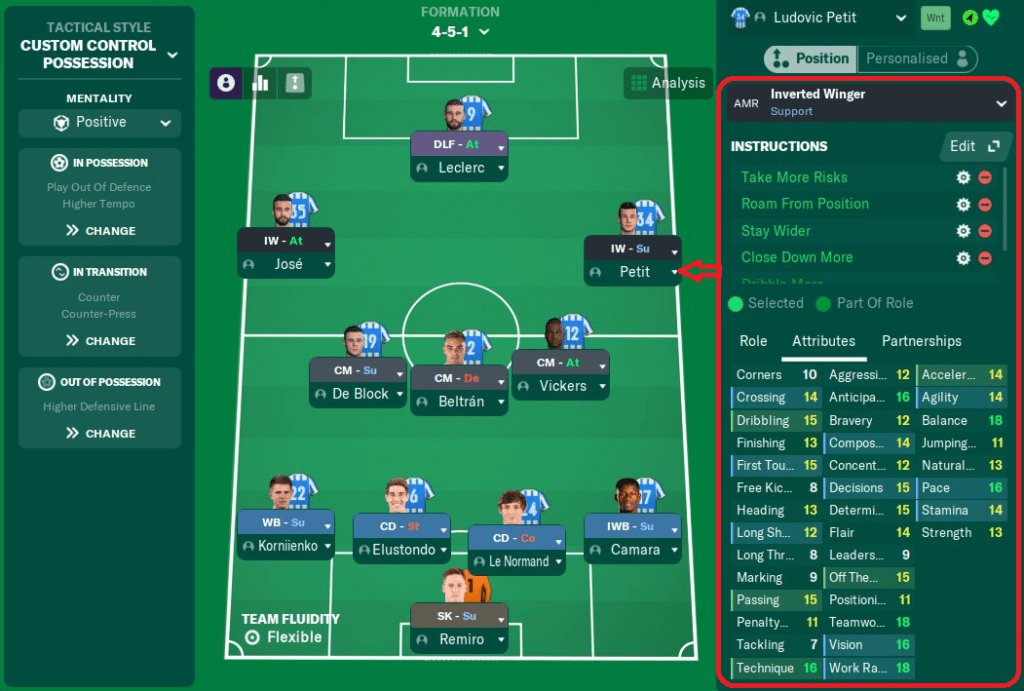
SIDE NOTE: For my game against Valencia I decided to line up in a more aggressive 4-3-3 variation of my 4-5-1 (by moving my wingers up). This was done in order to take the full advantage of a rather adventurous 4-2-3-1 shape that Valencia used against us. The main benefit being in our three midfielders outnumbering their two-men double pivot while shutting down their AMC playmaker.
He is definitely the “PLAYMAKING” part in our attacking trident. I could have just as easily set his role to that of a wide Advanced Playmaker, given his excellent mental and technical attributes. But I believe that IW is a more balanced role, offering more in attack than just a simple ball magnet. And even without using a ball magnet role we were able to create a neat overload on the right side of the pitch. That is because my opponent had no choice but to shift there to counter the combined threat of my CM(A) and IW(S).
In the image above, note the positions of the opposition defenders as they close down my CM(A) (#12) and AMR (#34). Also note #9 player, our “Drogba”, who has drawn no less than 3 opponents! In the meantime my AML #35 is largely unmarked and is seconds away from scoring another goal in our victory over Valencia.
The choices of roles for the AML position have also been largely influenced by the attributes of my players. So because of this I tend to alternate between Raumdeuter and IW(A) roles, depending on who is playing. This is my Raumdeuter:
And this is my current Inverted Winger and homegrown wonderkid Jose.
Both bring a uniquely different set of attributes and traits to the table. But in essence I need them both to move into the left half-space (aka move into channel). Raumdeuter does this naturally through its hard-coded instructions. While Jose, my inverted winger, does it because of his learned trait. Also I prefer these two roles over another wide attacker role such as IF(A) is that they tend to hang back a little to assess the situation around them. This allows more time for the overload to develop on the opposite flank. I have played with IFs in this position and while they are good at dribbling at pace and causing havoc in the final third, they tend to bomb forward too soon for my tactical needs.
To be continued…
And if you enjoyed this article, then please follow us @ Dictate The Game’s Facebook and Dictate The Game’s Twitter.

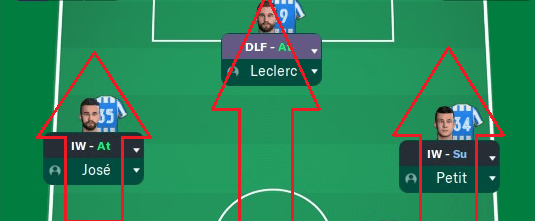
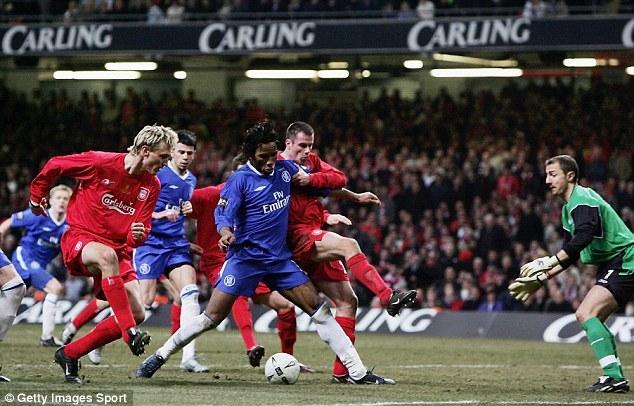
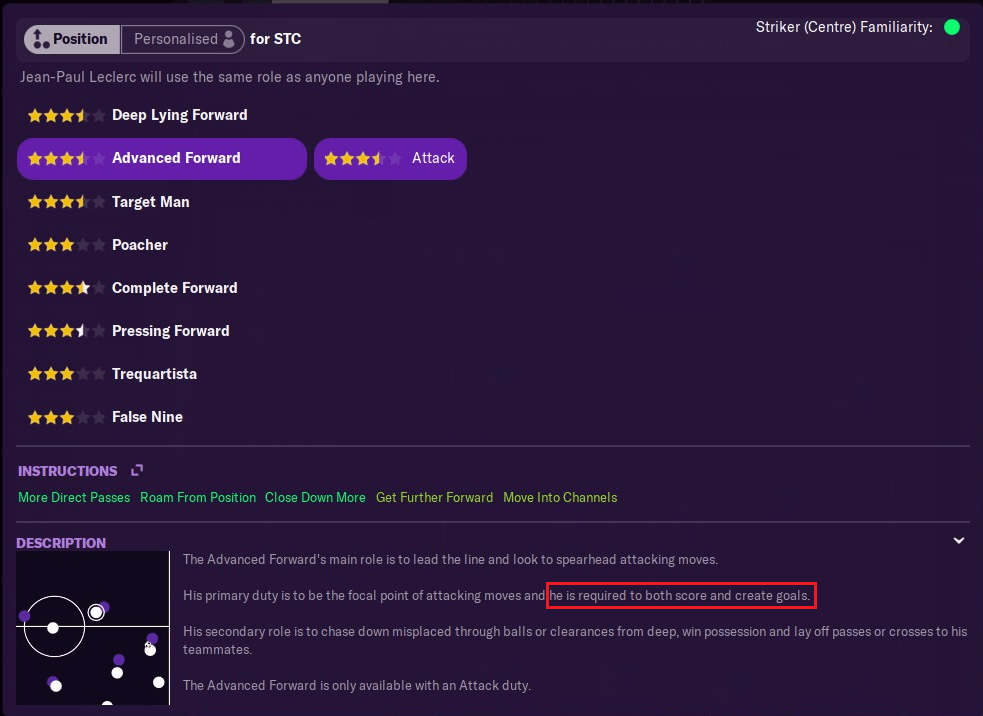
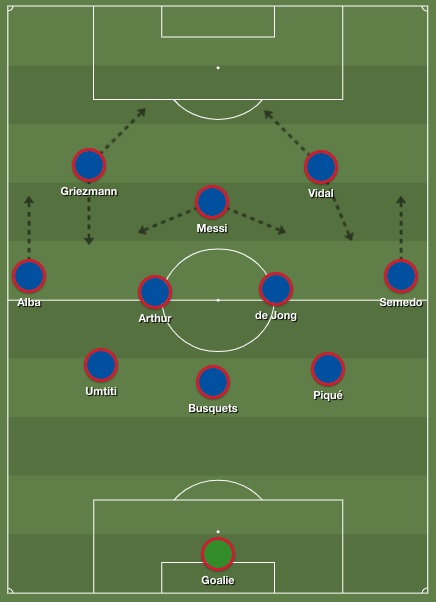
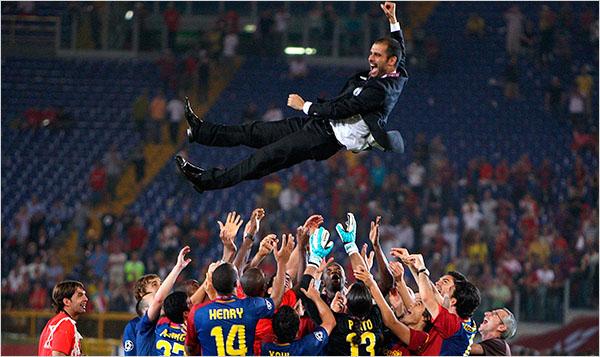
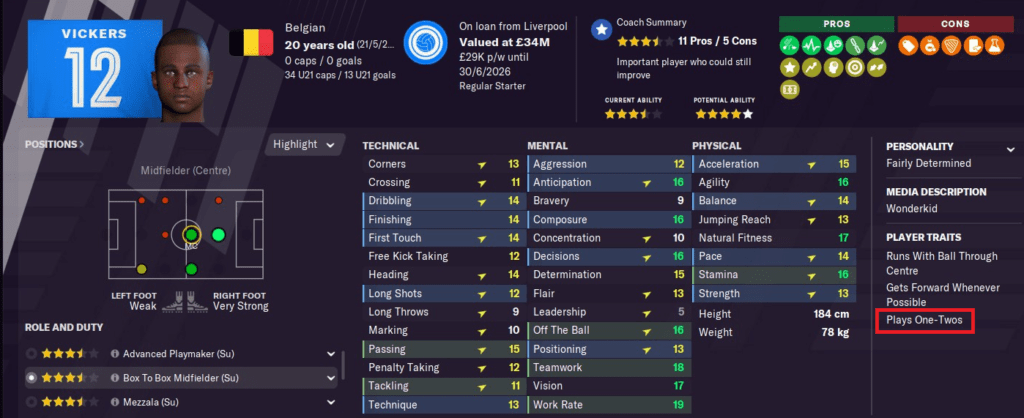
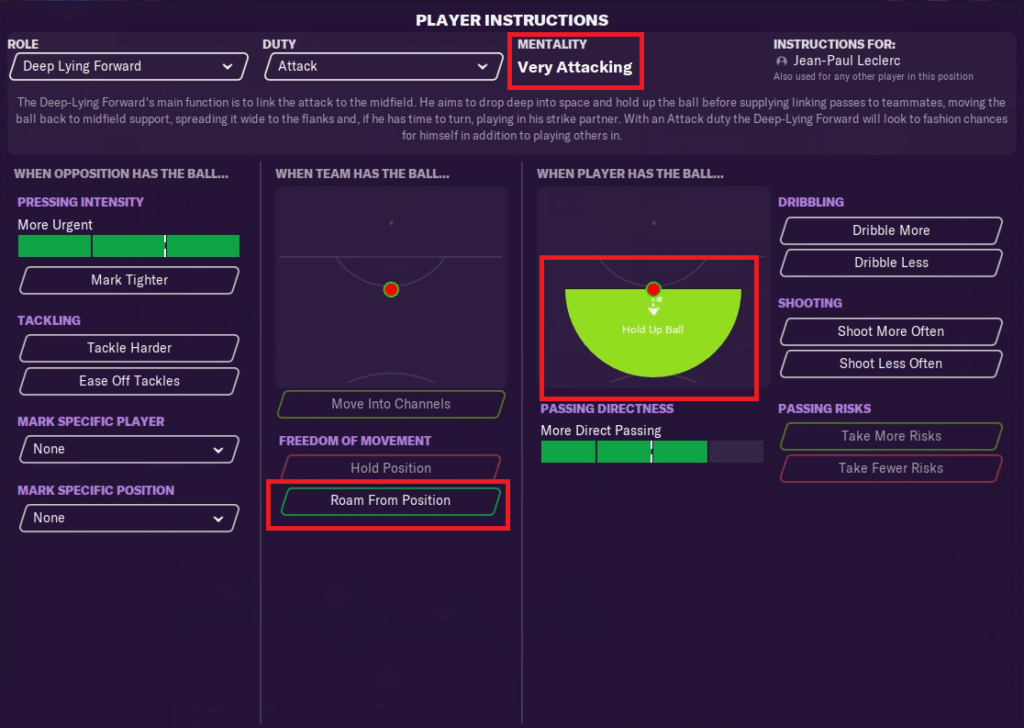
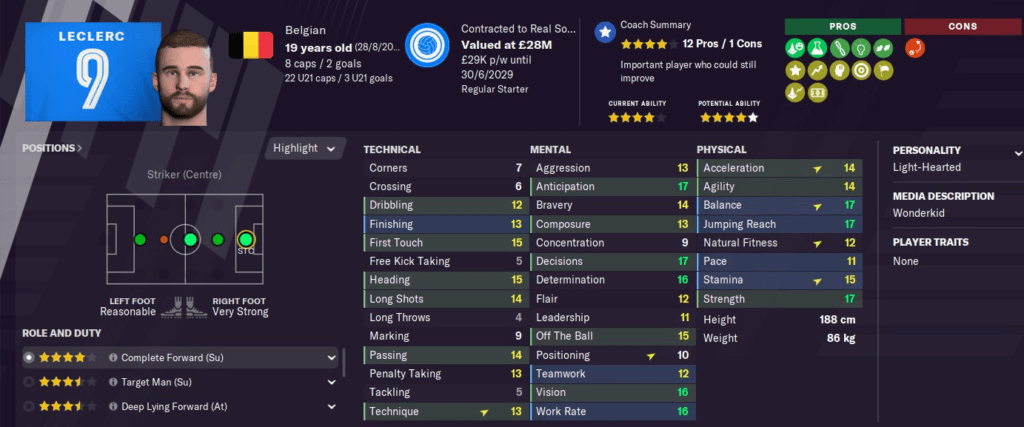
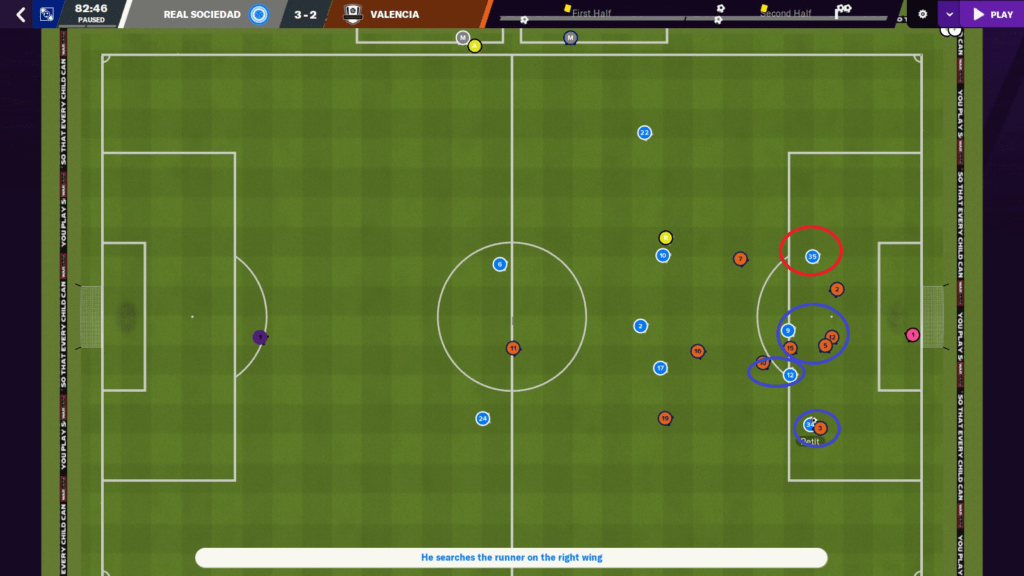

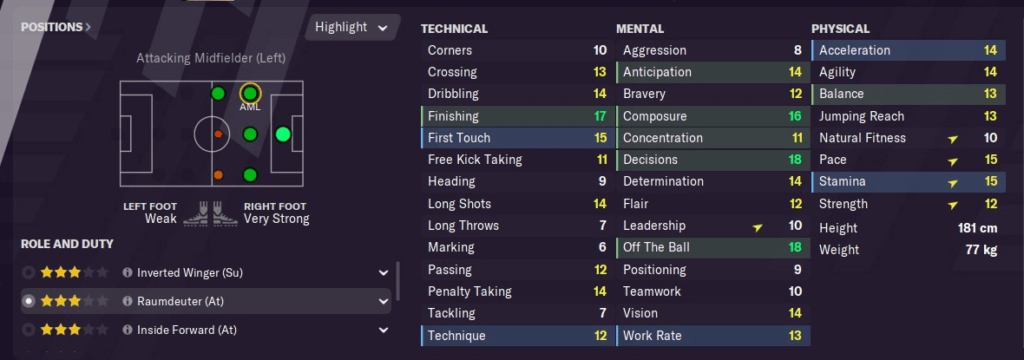
6 thoughts on “Total Football Journeyman: Perfecting the Attacking Trident”
will you make it available for download?
Can U please share this tactic?
I thought all the instructions were already shown in the pictures in the article. Same for the player instructions.
Jesus Christ, you outdone yourself again. I genuinely hate reading more than two sentences in a row but I always find myself having so much fun reading your articles. Well done.
Thank you for the kind words mate! Sorry about the delay, missed your comment completely
Can’t see any more Pi’s than the AMR position but that’s it i guess?